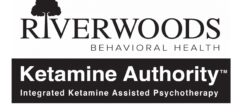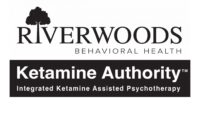
In our practice, we've seen numerous cases where patients, like Anna, have found profound relief from long-standing trauma through carefully guided ketamine therapy. We've gathered that the key isn't just in the administration of the drug, but in the holistic approach surrounding the treatment.
From understanding ketamine's role to integrating the insights gained, there's a journey that, if navigated thoughtfully, can be incredibly empowering. We're here to share five crucial tips that can enhance this healing process.
Let's explore how preparation, setting intentions, and embracing the experience can make a significant difference in trauma recovery, leaving you curious about the transformative potential of this approach.
Understanding Ketamine's Role
To grasp how ketamine aids in trauma healing, we must first understand its multifaceted role in the brain's complex chemistry. It's fascinating how ketamine, initially used as an anesthetic, now plays a pivotal role in mental health treatment, especially for trauma-related disorders. Its unique ability to act on the brain's glutamate system sets it apart from traditional treatments. Glutamate is a critical neurotransmitter involved in brain plasticity, learning, and memory.
We've discovered that ketamine can prompt the brain to create new neural connections, offering patients a 'reset' from the often entrenched pathways formed by traumatic experiences. This aspect is crucial because it offers a chance for individuals to respond to their environments and therapy in new, healthier ways. It's like paving a new path in a dense forest. The old, overgrown paths, which represent the traumatic memories and responses, aren't as easily traveled.
Moreover, ketamine's impact on the brain's default mode network (DMN) is noteworthy. The DMN is active when we're engaged in introspective activities, such as daydreaming or thinking about the past or future. In individuals with depression or PTSD, the DMN can be overactive, trapping them in a cycle of negative thoughts. Ketamine helps by decreasing this activity, allowing for a more present, less ruminative state of mind. This shift can be incredibly liberating for someone trapped in the grip of trauma.
Preparing for Treatment
Before exploring ketamine's transformative healing process, it's essential we understand how to properly prepare for treatment.
Firstly, we need to ensure we're physically ready. This means abstaining from alcohol and any non-prescribed drugs for at least 24 hours before our session. Eating a light meal a few hours prior can help prevent nausea, which some people experience during treatment.
Next, we'll arrange our schedule to have no pressing commitments immediately after the session. It's crucial we give ourselves the space and time to process the experience without external pressures. This might mean taking a day off work or ensuring we've no social obligations that day.
We also need to prepare our environment. If we're undergoing treatment at home, we'll create a comfortable, quiet space where we won't be disturbed. Comfortable seating or a place to lie down, soft lighting, and perhaps calming music can all contribute to creating a supportive atmosphere.
Lastly, it's important we've a support system in place. Whether it's a trusted friend, family member, or a professional, having someone to talk to after the session can make a significant difference in integrating the experience into our healing journey.
Setting Intentions
Establishing clear intentions for our ketamine therapy session is a crucial step in the healing process. It's about more than just showing up; it's about actively participating in our own recovery. By setting intentions, we're telling ourselves and the universe exactly what we hope to achieve, whether it's gaining insight into our trauma, finding peace, or unlocking a path to forgiveness.
We've found that the most effective intentions are those that are specific, yet open-ended enough to allow for the unexpected. For example, rather than simply wishing for 'happiness,' we might set an intention to 'explore what barriers are preventing happiness in our life.' This kind of intention-setting helps to guide the session, giving it direction without boxing us into a specific outcome.
Moreover, articulating our intentions can significantly enhance the therapeutic process. Speaking our goals out loud to our therapist or even just to ourselves reinforces our commitment to healing and can help keep our focus during the session. It's a powerful reminder that we're here to engage deeply with our inner selves, laying the groundwork for profound change.
Embracing the Experience
Once we've set our intentions, it's essential we fully immerse ourselves in the ketamine therapy experience. This means letting go of expectations and opening our minds to whatever comes our way. It's about being present in the moment, allowing the ketamine to guide us through our subconscious.
We must trust the process, even when it feels unfamiliar or uncomfortable. It's natural to encounter resistance, but by reminding ourselves why we're here, we can move through it. We've chosen this path for healing, and every step, even the challenging ones, is part of our journey toward recovery.
It's also crucial we create a supportive environment for our sessions. This includes a comfortable, safe space where we won't be interrupted. Having a trusted therapist or guide with us can make a significant difference in how we navigate the experience. They're there to offer support and ensure our safety throughout the process.
Lastly, we should remember to be kind to ourselves during and after the session. Self-compassion is a powerful tool in healing. We're undertaking a profound journey, and it's okay to feel a range of emotions. Embracing the experience with an open heart and mind is key to unlocking the therapeutic benefits of ketamine.
Integrating Insights
After embracing the ketamine experience fully, it's crucial we now focus on integrating the insights gained into our daily lives. This process isn't always straightforward, but it's essential for achieving lasting change and healing. We've found that keeping a journal during and after sessions helps us capture revelations and feelings that can be fleeting. It's a tangible way to hold onto the profound moments and ensure we don't lose sight of them.
We also recommend setting aside time each day to reflect on these insights. Whether it's through meditation, a walk in nature, or simply sitting quietly with our thoughts, this dedicated time allows us to connect deeply with our inner selves and the lessons learned. It's during these moments that we can begin to see how our perceptions and interactions can shift in a more positive direction.
Moreover, sharing our experiences with a trusted therapist or support group can further solidify the insights gained. Discussing our journey openly not only helps us process our emotions but also provides a different perspective that might enhance our understanding and application of the insights. By actively engaging in these practices, we empower ourselves to make meaningful changes and move forward in our healing journey.
Frequently Asked Questions
How Does One's Diet or Nutritional Intake Affect the Efficacy of Ketamine Treatment for Trauma Healing?
We've been wondering how our diet or nutritional intake can influence the effectiveness of certain treatments we're exploring.
It turns out that what we eat can significantly affect how well ketamine works for trauma healing. Eating a balanced diet, rich in vitamins and nutrients, seems to enhance its efficacy, helping our bodies and minds respond better.
It's fascinating how closely our physical health is tied to our mental healing processes.
Can Physical Exercise or Specific Types of Physical Activities Enhance the Effectiveness of Ketamine Therapy for Trauma Recovery?
We're exploring whether physical exercise or certain physical activities can boost the effectiveness of therapy for trauma recovery. It's intriguing to think that moving our bodies could play a key role in healing our minds.
We've heard that exercise releases endorphins, which naturally elevate mood, but we're curious about the specific impact on therapy outcomes. Could regular physical activity be a game-changer in enhancing recovery processes?
We're eager to dive deeper into this topic.
Are There Any Specific Age-Related Considerations or Adjustments Needed When Using Ketamine for Trauma Healing in Elderly Patients?
We're exploring whether age impacts the approach to trauma healing, especially for the elderly. It's crucial to consider if adjustments are necessary when older patients are involved.
We're curious about specific age-related changes that might affect treatment efficacy or safety.
Our goal is to ensure everyone receives the best care possible, regardless of age, and to understand how treatments may need to be tailored to meet different age group needs.
How Do Co-Existing Mental Health Conditions, Such as Anxiety or Depression, Impact the Process and Outcomes of Ketamine-Assisted Trauma Therapy?
We've found that co-existing mental health conditions like anxiety or depression can complicate the journey of ketamine-assisted trauma therapy. These conditions might affect how individuals respond to treatment, potentially requiring tailored approaches to optimize outcomes.
It's crucial we monitor these patients closely, adjusting strategies as needed to ensure the therapy supports their overall mental health. Collaborating with mental health professionals can enhance the effectiveness and safety of the treatment plan.
What Are the Legal Considerations and Varying Laws Surrounding the Use of Ketamine for Therapeutic Purposes Across Different Regions or Countries?
We're diving into the complex world of legal requirements and diverse regulations for using ketamine in therapy across various regions and countries.
It's crucial we understand these legal landscapes, as they significantly impact our access and ability to offer or receive ketamine-assisted treatments.
These laws vary widely, and staying informed helps us navigate the potential hurdles, ensuring we're operating within legal bounds while exploring this innovative therapeutic option.
Conclusion
We've explored how ketamine can be a powerful tool for healing trauma, emphasizing the importance of preparation, setting intentions, embracing the experience, and integrating insights.
By understanding ketamine's role and approaching our healing journey with open hearts and minds, we're setting ourselves up for profound transformation.
Let's carry these lessons forward, supporting each other in navigating our paths to recovery.
Together, we can turn our trauma into a source of strength and resilience.

